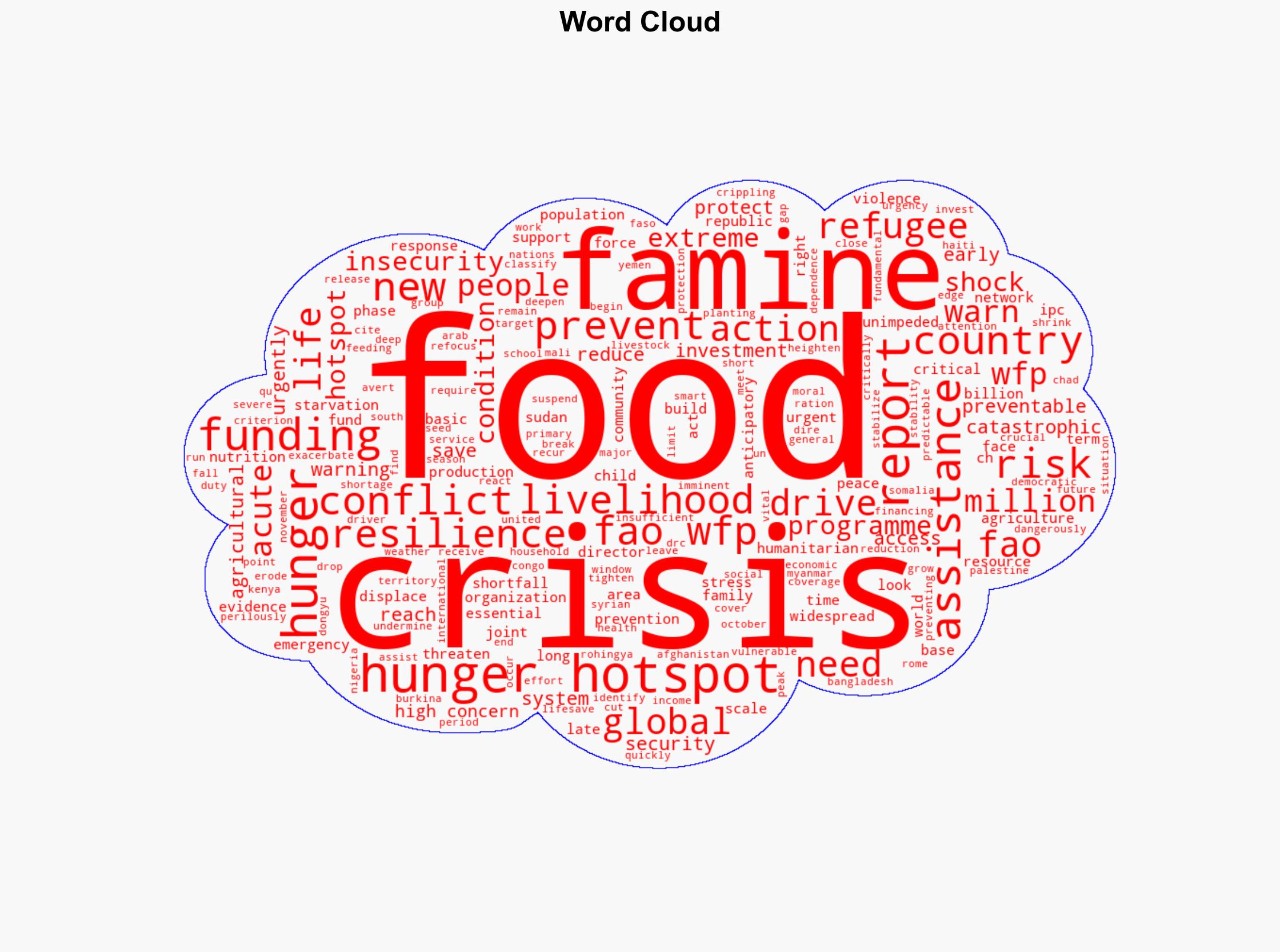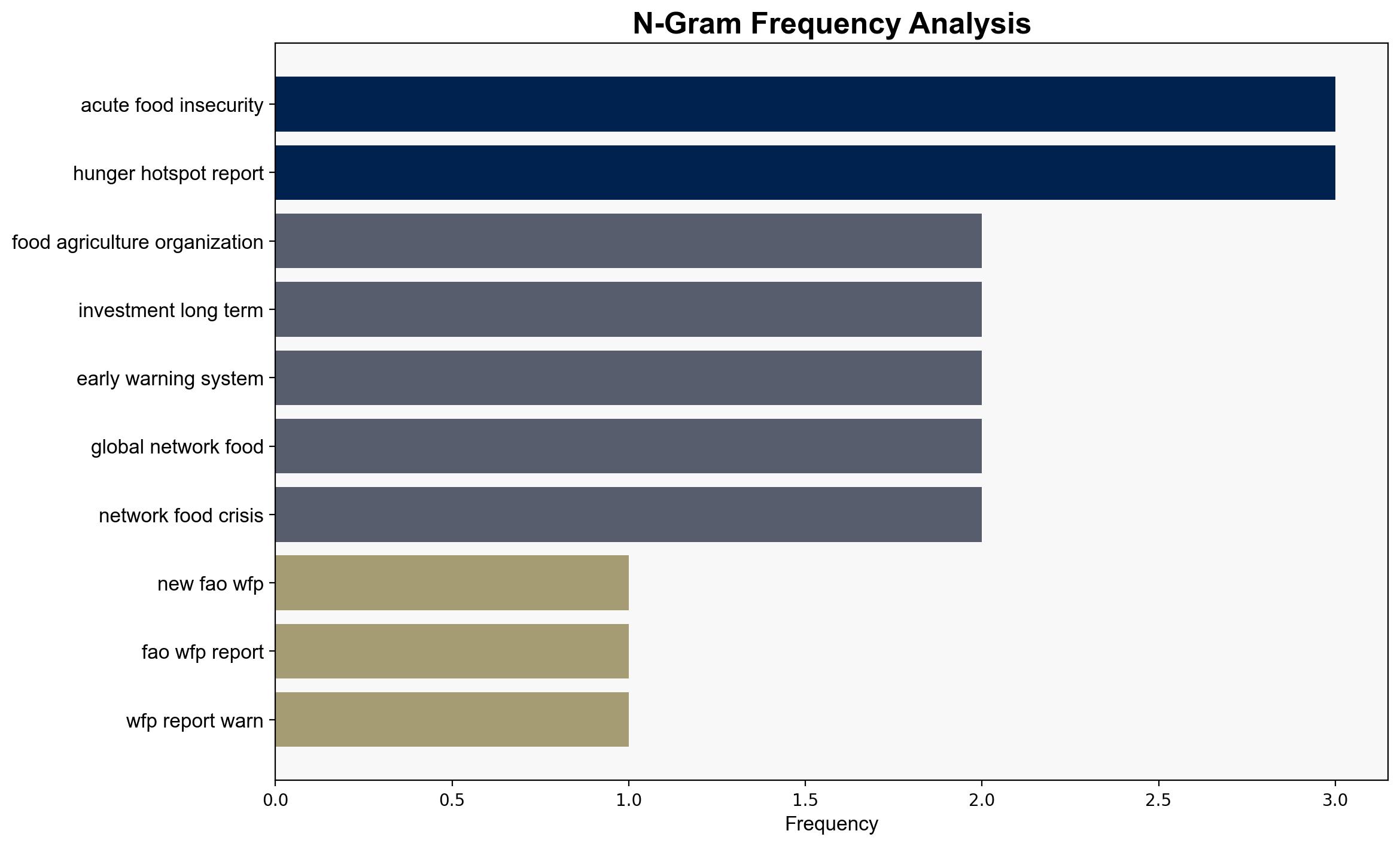New FAO-WFP report warns of shrinking window to prevent millions more people facing acute food insecurity in 16 hotspots – Globalsecurity.org
Published on: 2025-11-12
AI-powered OSINT brief from verified open sources. Automated NLP signal extraction with human verification. See our Methodology and Why WorldWideWatchers.
Intelligence Report: New FAO-WFP report warns of shrinking window to prevent millions more people facing acute food insecurity in 16 hotspots – Globalsecurity.org
1. BLUF (Bottom Line Up Front)
The strategic judgment is that without immediate and substantial international intervention, the risk of widespread famine in identified hotspots is high. The most supported hypothesis is that conflict and economic shocks are the primary drivers of acute food insecurity. Confidence level: High. Recommended action: Immediate scaling of humanitarian aid and investment in long-term resilience and food security programs.
2. Competing Hypotheses
Hypothesis 1: Conflict and economic shocks are the primary drivers of acute food insecurity in the identified hotspots. This is supported by the report’s emphasis on conflict and economic issues as key factors exacerbating hunger.
Hypothesis 2: Climate change and extreme weather events are the primary drivers of acute food insecurity. While these factors are mentioned, the report places less emphasis on them compared to conflict and economic shocks.
The most likely hypothesis is Hypothesis 1, as it aligns with the report’s focus and the historical context of these regions where conflict and economic instability have been persistent issues.
3. Key Assumptions and Red Flags
Assumptions: The international community has the capacity and willingness to respond effectively. The data provided by FAO-WFP is accurate and unbiased.
Red Flags: Potential underreporting or misreporting of conditions due to access issues in conflict zones. Political agendas may influence the prioritization of aid distribution.
4. Implications and Strategic Risks
The primary implication is the potential for significant humanitarian crises in the identified hotspots, leading to increased migration, regional instability, and potential conflict spillover. Economic risks include disruption of local and regional markets. Politically, failure to address these issues could lead to decreased trust in international institutions and donor fatigue.
5. Recommendations and Outlook
- Immediate action: Increase funding and logistical support for humanitarian aid in the affected regions.
- Long-term strategy: Invest in resilience-building programs, including agricultural support and infrastructure development.
- Best-case scenario: Successful international intervention stabilizes the situation, preventing famine and building long-term resilience.
- Worst-case scenario: Inaction or insufficient response leads to widespread famine, increased mortality, and regional destabilization.
- Most-likely scenario: Partial intervention mitigates some immediate risks, but underlying issues remain, requiring ongoing attention.
6. Key Individuals and Entities
FAO Director-General Qu Dongyu, UN World Food Programme (WFP), Food and Agriculture Organization (FAO).
7. Thematic Tags
Regional Focus: Africa, Middle East, South Asia
Structured Analytic Techniques Applied
- Causal Layered Analysis (CLA): Analyze events across surface happenings, systems, worldviews, and myths.
- Cross-Impact Simulation: Model ripple effects across neighboring states, conflicts, or economic dependencies.
- Scenario Generation: Explore divergent futures under varying assumptions to identify plausible paths.
- Network Influence Mapping: Map influence relationships to assess actor impact.
Explore more:
Regional Focus Briefs ·
Daily Summary ·
Methodology





